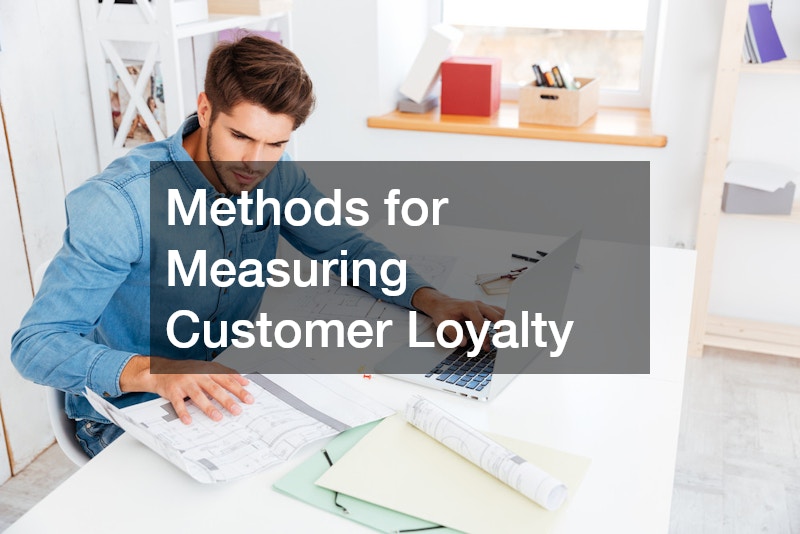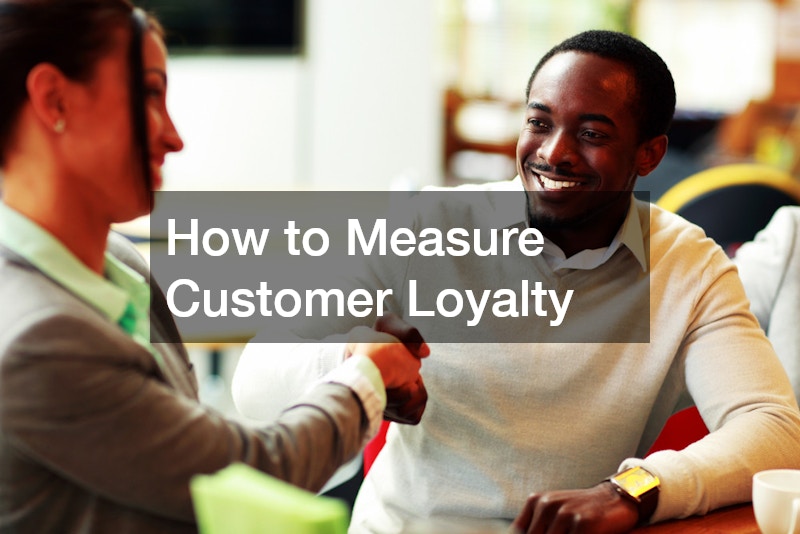How to Measure Customer Loyalty
Customer loyalty is a crucial aspect of any successful business strategy. Loyal customers not only contribute to consistent revenue but also act as brand advocates, enhancing your reputation and attracting new clients. Understanding how to measure customer loyalty allows businesses to identify their strengths and weaknesses, providing insights into areas for improvement. In this article, we will explore various methods to measure customer loyalty, the metrics involved, and the tools that can help businesses track and enhance their customer loyalty initiatives.
Understanding Customer Loyalty
Before diving into measurement strategies, it’s essential to understand what customer loyalty means. Customer loyalty refers to the tendency of customers to continue buying from a specific brand or company over time, demonstrating a preference that extends beyond mere transactional behavior. It encompasses emotional attachment, trust, satisfaction, and a positive experience with the brand.
Why Measuring Customer Loyalty Matters
Measuring customer loyalty is essential for businesses seeking sustainable growth and long-term success. Understanding the factors that contribute to customer loyalty allows companies to tailor their strategies effectively, leading to numerous benefits.
1. Retention vs. Acquisition
One of the most compelling reasons to measure customer loyalty is the stark difference in cost between retaining existing customers and acquiring new ones. Research consistently shows that acquiring a new customer can cost five to seven times more than retaining an existing one. Loyal customers have already made a commitment to your brand, often stemming from positive past experiences.
They are likely to make repeat purchases, which can lead to a steady revenue stream. Additionally, these customers can serve as a reliable buffer against market fluctuations. When a company understands and nurtures its loyal customer base, it can create strategies that enhance retention, ultimately driving down overall costs. Businesses that focus on loyalty often implement loyalty programs, personalized marketing, and exceptional customer service, further solidifying relationships and increasing the likelihood of repeat business.
2. Customer Insights
Measuring customer loyalty provides valuable insights into customer behavior, preferences, and satisfaction levels. These insights are crucial for informing business decisions and shaping effective marketing strategies. By analyzing loyalty metrics, companies can identify trends in customer behavior, pinpoint the factors that lead to loyalty, and understand how various demographics interact with their brand.
For instance, customer feedback can reveal what aspects of the product or service are most appreciated or highlight areas that require improvement. Furthermore, segmentation of loyal customers based on their purchasing habits or preferences enables businesses to tailor their offerings and marketing messages to specific groups. This targeted approach can lead to more effective campaigns and product developments that resonate with customers, enhancing their loyalty and satisfaction.
3. Competitive Advantage
In today’s highly competitive marketplace, understanding and leveraging customer loyalty can provide a significant competitive advantage. Companies that invest time and resources in measuring loyalty can differentiate themselves from competitors by tailoring their offerings to meet the unique needs and desires of their most valuable customers.
By identifying what drives loyalty—whether it be product quality, customer service, or brand values—businesses can craft marketing strategies that resonate with their target audience. This level of customization can foster deeper emotional connections with customers, increasing the likelihood of brand advocacy. Additionally, understanding loyal customers’ feedback and preferences can lead to innovations in products or services that further enhance customer satisfaction and loyalty.
4. Profitability
Finally, loyal customers contribute significantly to a company’s profitability. Research has shown that loyal customers not only tend to spend more over their lifetime but are also more willing to pay premium prices for products or services from brands they trust. This tendency means that businesses can achieve higher profit margins with loyal customers compared to one-time buyers.
Moreover, loyal customers are more likely to engage in word-of-mouth marketing, promoting your brand through personal recommendations. This organic promotion can lead to new customer acquisition at a fraction of the cost of traditional marketing efforts. Consequently, understanding and measuring customer loyalty directly impacts a company’s bottom line, as it aligns marketing efforts with customer needs and enhances overall satisfaction.
Key Metrics for Measuring Customer Loyalty
To effectively measure customer loyalty, businesses should focus on several key metrics:
1. Net Promoter Score (NPS)
NPS is a widely used metric that gauges customer loyalty based on their likelihood to recommend your product or service to others. The NPS is determined by asking customers to rate, on a scale of 0 to 10, how likely they are to recommend your brand. Based on their responses, customers are categorized into three groups:
- Promoters (9-10): Loyal customers who will likely refer others.
- Passives (7-8): Satisfied but unenthusiastic customers who might switch to competitors.
- Detractors (0-6): Unhappy customers who can damage your brand’s reputation through negative word-of-mouth.
To calculate your NPS, subtract the percentage of Detractors from the percentage of Promoters. A higher NPS indicates greater customer loyalty.
2. Customer Satisfaction Score (CSAT)
CSAT measures customer satisfaction with a specific interaction or overall experience. It is typically assessed through a simple survey question: “How satisfied are you with your experience?” Customers respond on a scale (e.g., 1 to 5 or 1 to 10).
To calculate CSAT, divide the number of satisfied customers (those who rate 4 or 5 on a 5-point scale) by the total number of respondents, then multiply by 100 to get a percentage. A higher CSAT score reflects greater customer loyalty.
3. Customer Effort Score (CES)
CES measures the ease with which customers can interact with your brand and achieve their goals. The survey usually asks customers to rate how much effort they had to exert to resolve an issue or complete a task, on a scale from 1 to 5 (or 1 to 7).
A lower effort score indicates a smoother customer experience, leading to higher loyalty levels. To calculate CES, average the scores from all responses. Businesses should aim to minimize customer effort to foster loyalty.
4. Repeat Purchase Rate (RPR)
The Repeat Purchase Rate reflects the percentage of customers who return to make another purchase within a specific timeframe. This metric provides insight into customer retention and loyalty.
To calculate RPR, use the formula:
RPR=(Number of customers who made repeat purchasesTotal number of customers)×100RPR = \left( \frac{\text{Number of customers who made repeat purchases}}{\text{Total number of customers}} \right) \times 100
A higher RPR indicates a more loyal customer base.
5. Churn Rate
Churn Rate is the percentage of customers who stop doing business with your company over a specific period. Monitoring this metric helps identify potential issues affecting customer loyalty.
To calculate Churn Rate, use the formula:
Churn Rate=(Number of customers lost during a periodTotal number of customers at the beginning of the period)×100\text{Churn Rate} = \left( \frac{\text{Number of customers lost during a period}}{\text{Total number of customers at the beginning of the period}} \right) \times 100
A lower churn rate indicates better customer retention and loyalty.
6. Customer Lifetime Value (CLV)
CLV represents the total revenue a business can expect from a customer throughout their relationship. Understanding CLV helps businesses prioritize customer loyalty initiatives and allocate resources effectively.
To calculate CLV, use the formula:
CLV=Average Purchase Value×Number of Transactions×Customer LifespanCLV = \text{Average Purchase Value} \times \text{Number of Transactions} \times \text{Customer Lifespan}
A higher CLV suggests a strong and loyal customer base.
Methods for Measuring Customer Loyalty

1. Surveys and Feedback Forms
Surveys are one of the most effective ways to measure customer loyalty. By soliciting direct feedback from customers, businesses can gather valuable insights into their experiences, satisfaction levels, and areas for improvement.
- Designing Surveys: Keep surveys short and focused, ensuring that questions align with key metrics (NPS, CSAT, CES). Include open-ended questions to capture qualitative feedback.
- Timing: Send surveys after significant interactions, such as purchases, support calls, or service completions, to capture immediate impressions.
- Incentives: Consider offering incentives, such as discounts or rewards, to encourage customers to participate.
2. Customer Interviews
Conducting one-on-one interviews with customers can provide deeper insights into their perceptions of your brand and their loyalty. These interviews allow for open discussions and can uncover nuanced feedback that surveys may miss.
- Select a Diverse Group: Choose customers from various demographics and loyalty levels to gain a well-rounded perspective.
- Prepare Open-Ended Questions: Ask open-ended questions that encourage customers to share their thoughts on your products, services, and overall experience.
3. Social Media Monitoring
Monitoring social media can provide valuable insights into customer sentiment and loyalty. Analyzing comments, mentions, and reviews can help businesses gauge how customers feel about their brand.
- Sentiment Analysis: Use tools to analyze customer sentiment on social media platforms. Positive comments and engagement indicate strong loyalty, while negative comments may highlight areas for improvement.
- Engagement Tracking: Track the frequency and nature of customer interactions with your brand on social media to identify loyal advocates and areas for engagement.
4. Website Analytics
Analyzing website traffic and user behavior can help measure customer loyalty. High return visitor rates and longer session durations often indicate loyalty.
- Tracking Return Visitors: Use analytics tools to monitor the percentage of returning visitors to your website. A high percentage suggests that customers are engaged and loyal.
- User Behavior Analysis: Analyze how users navigate your website, focusing on metrics like bounce rate, time spent on site, and conversion rates. These insights can inform strategies to enhance customer loyalty.
5. Customer Loyalty Programs
Implementing a customer loyalty program can incentivize repeat purchases and provide data on customer engagement. Track enrollment and participation rates to measure the effectiveness of the program.
- Program Structure: Design a program that rewards customers for their loyalty, such as points for purchases, exclusive offers, or early access to sales.
- Monitoring Participation: Analyze participation rates and the impact of the program on repeat purchases to assess its effectiveness in fostering loyalty.
Tools for Measuring Customer Loyalty
Several tools and software solutions can aid businesses in measuring customer loyalty effectively. Here are a few popular options:
1. Survey Tools
- SurveyMonkey: A user-friendly tool for creating and distributing surveys to collect customer feedback.
- Qualtrics: Offers advanced survey options, including NPS, CSAT, and CES measurements, along with robust analytics.
2. Customer Relationship Management (CRM) Software
- Salesforce: Helps track customer interactions, purchases, and preferences, providing insights into loyalty trends.
- HubSpot: Offers tools to manage customer relationships and gather feedback through surveys and forms.
3. Social Media Monitoring Tools
- Hootsuite: Allows businesses to monitor brand mentions and customer sentiment across social media platforms.
- Brandwatch: Provides advanced analytics on customer engagement and sentiment, helping identify loyal advocates.
4. Web Analytics Tools
- Google Analytics: Tracks website traffic, user behavior, and conversion rates, providing insights into customer engagement.
- Hotjar: Offers heatmaps and user recordings to analyze how customers interact with your website, helping identify loyalty trends.
Conclusion
Measuring customer loyalty is essential for businesses seeking to improve retention, drive growth, and enhance overall customer satisfaction. By leveraging key metrics such as NPS, CSAT, and RPR, along with effective measurement methods like surveys, interviews, and social media monitoring, companies can gain valuable insights into their customer relationships. Utilizing tools and software can streamline the measurement process and provide actionable data to foster loyalty initiatives. Ultimately, a strong focus on customer loyalty not only benefits the bottom line but also cultivates a loyal community of brand advocates who contribute to long-term success.

